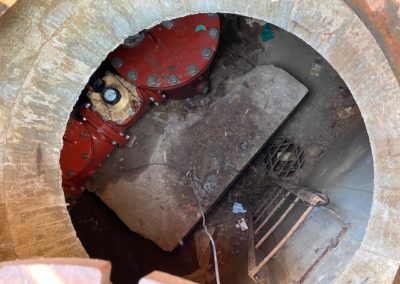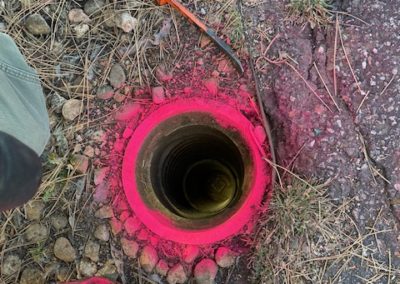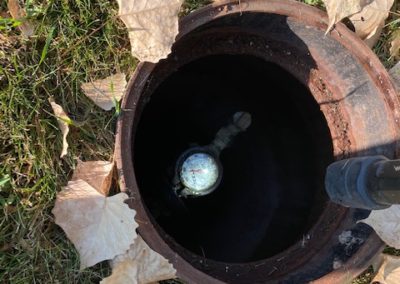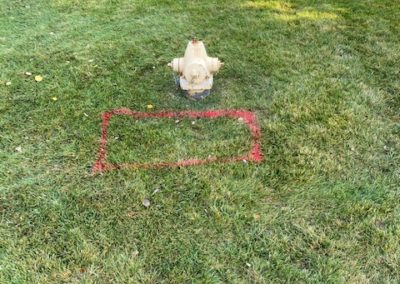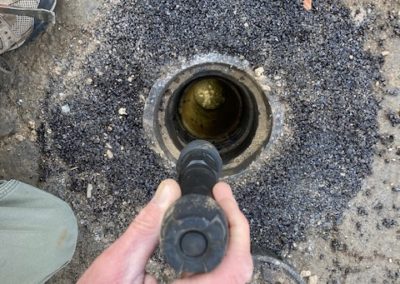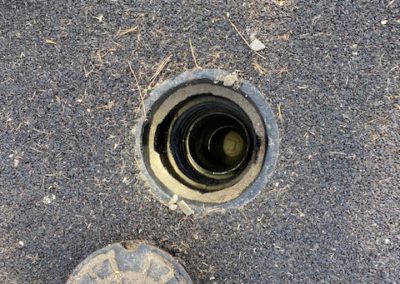Columbine Lakes Private Water System Assessment
Overview
Columbine Lakes is a community of approximately 260 single-family and multi-family residences. Constructed in 1970, the original community drinking water system was constructed as a privately owned system. After having experienced several water main breaks over the past few years, each resulting in the loss of drinking water and fire protection for the entire neighborhood, it has become apparent that upgrades are needed. The team was tasked with finding a solution to upgrade and improve the drinking water system, ensuring the desired reliability.
The team has settled on a 10-year plan that will allow the community to finance necessary upgrades and ultimately transfer operation to a Denver Water Total Service system. The plan provides information on grants and funding, risk analysis, and necessary upgrades. The team has also completed hydraulic calculations to ensure proper sizing of the infrastructure and has digitized (recreated in AutoCAD) the as-built documentations of the system.
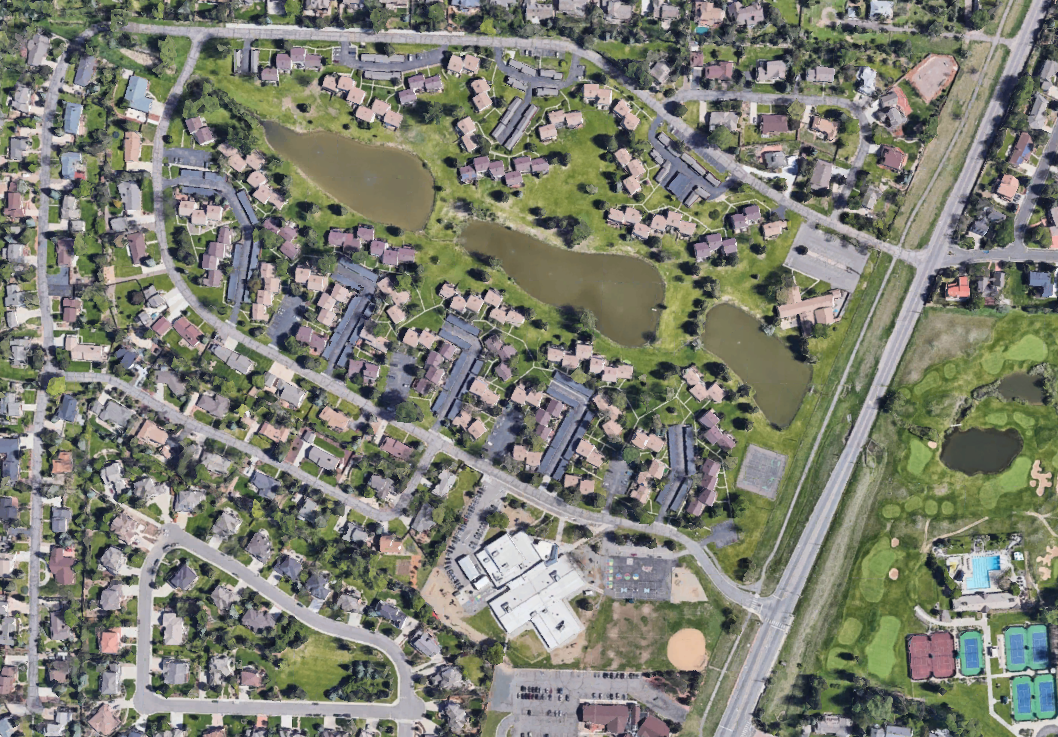
Live Zoom Chat
Use the link below to join us live from 8:00 – 10:30 a.m. on April 29.
Join from PC, Mac, Linux, iOS or Android: https://mines.zoom.us/j/92998941211?pwd=V09QN1FoSmVQaWhxTVhITkk5ZGNYdz09
Password: 721687
Or iPhone one-tap: 16699006833,92998941211# or 12532158782,92998941211#
Or Telephone:
Dial: +1 669 900 6833 (US Toll) or +1 253 215 8782 (US Toll)
Meeting ID: 929 9894 1211
International numbers available: https://mines.zoom.us/u/amrdbUnoH
Team Members
- Kassandra Gongora
- Andrew Hellman
- James McGavin
- Nicole Naper
- Jaxon Sharp
The Client
- Brianna Atherton
- Columbine Lakes Homeowners Association
Acknowledgements
Project Advisor: Lisa Woodward, P.E., BCEE
Technical Advisor: Cynthia Lane, P.E.
Special Thanks: Alan Crouch, P.E. and Kedric Szana, P.E. from Denver Water
Video
Elevator Pitch
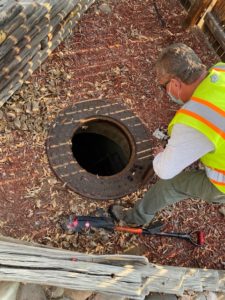 We are the Columbine Lakes Private Water System Assessment team comprised of three Civil Engineers and two Environmental Engineers. Our client is the Columbine Lakes neighborhood HOA headed by Brianna Atherton. The neighborhood is located in Littleton Colorado and their municipal water system was built in 1970 as a privately owned system. This system began experiencing frequent water main breaks due to degradation. The HOA decided that they needed to look further into ownership options as they questioned whether or not they would be able to uphold the systems integrity. They presented three options to our team dealing with ownership and maintenance of the system with those options being: 1) Stay private, 2) Form a special district under the Columbine Water & Sanitation District, and 3) Convert to a Denver Water Total Service. Our goal was to determine the best option for the community in terms of feasibility, finances, quality, and safety.
We are the Columbine Lakes Private Water System Assessment team comprised of three Civil Engineers and two Environmental Engineers. Our client is the Columbine Lakes neighborhood HOA headed by Brianna Atherton. The neighborhood is located in Littleton Colorado and their municipal water system was built in 1970 as a privately owned system. This system began experiencing frequent water main breaks due to degradation. The HOA decided that they needed to look further into ownership options as they questioned whether or not they would be able to uphold the systems integrity. They presented three options to our team dealing with ownership and maintenance of the system with those options being: 1) Stay private, 2) Form a special district under the Columbine Water & Sanitation District, and 3) Convert to a Denver Water Total Service. Our goal was to determine the best option for the community in terms of feasibility, finances, quality, and safety.
Ultimately the team decided that converting into a Denver Water Total Service would be the best long term solution for the neighborhood. However, after discussions with Denver Water, the system would need to meet baseline requirements in order to become a Total Service system. It was decided that a 10-year plan should be developed for the HOA to follow in order to allow time to apply for necessary funding that would go towards the upgrades that Denver Water would require. Along with this plan, the team digitized the as-built model of the system using AutoCAD to provide an electronic model of the water infrastructure, roadway, and property lines. Furthermore, the team is developing a hydraulic model of the system using EPANET that will run water flow simulations under certain conditions. This model will be given to the HOA as well as Denver Water so that both parties can understand the current conditions of the system and how it operates.
Design Approach
When our team began this project, it was imperative that the existing conditions of the site were analyzed first and foremost before any decision making or even research could take place. A site visit was conducted within the first phase of the project during the first semester, in which the team was accompanied by Cynthia Lane and Scott Hand (Assistant District Manager of Platte Canyon W&S District and District Operations Supervisor, respectively). This gave insight into the size of the system as well as the size of the community it served and the team was able to analyze current conditions to identify strengths and weaknesses. Research into the laws and regulations pertaining to the Columbine Lakes municipal water system as well as research into similar sized communities gave the team insight into what types of challenges the HOA would face with each option. Not only did the site analysis and construction as-builts aid in the research portion of the project, but also in creating models of the system. These as-builts were the base for creating the electronic model of the system in AutoCAD as well as the hydraulic model of the system using EPANET.
After breaking down the research, talking with the client, and gaining an understanding of the current needs of the system, it was determined that the solution would be a little more difficult than just choosing one option and running with it. It was decided that ultimately the HOA should convert the water system into a Denver Water Total Service system, however, the system does not currently meet Denver Water’s requirements. Therefore, the team decided that the HOA should implement a 10-year plan in which they focus on applying for grants and funding so that they can complete the necessary upgrades. This plan will aid in keeping the Columbine Lakes neighborhood on track towards transferring over to Denver Water which will ultimately be the best option for the HOA in terms of improving the reliability and resiliency of the municipal water system.
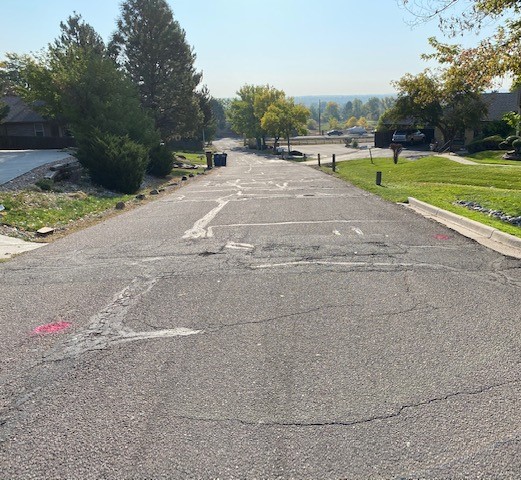
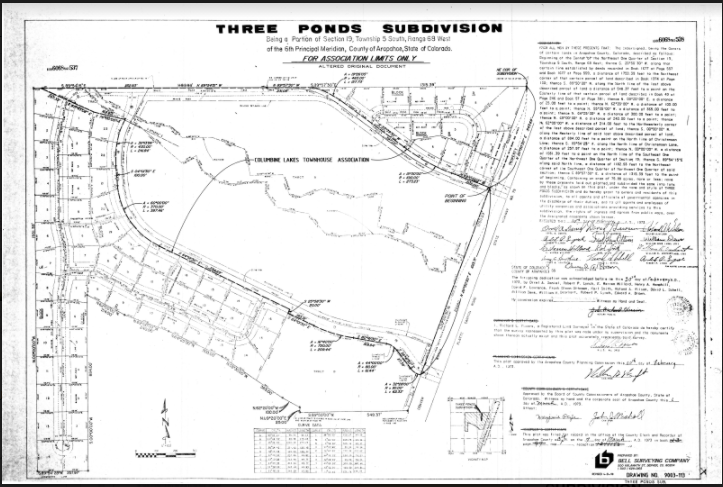
Design Solution
10-Year Plan

Through extensive research of the process and costs, we realized that eventually joining Denver Water is a complex solution that will need to be undertaken over many years. To provide the most assistance possible within the limited time frame of our project, we have created a 10-year plan for Columbine Lakes to join Denver Water after initially registering with the state and obtaining financing to perform system upgrades. The team decided that the 10-year timeframe is the most realistic timeframe for the community as we realize that although this is a top priority for the community, there will be other issues that the HOA will have to deal with while upgrading their water system.
As of January 2021, the Columbine Lakes HOA had approximately $275,000 in their budget reserves, but will need to keep $100,000 in reserves in case of emergency. This only leaves about $175,000 for this project, which makes the loans and grants essential. The HOA is already spending from the reserves in order to have C&L maintenance on staff ($40,000 in 2020) and this expense, along with other neighborhood maintenance costs, will continue. One of the biggest expenses the HOA will have to incur is installing a second tap in the neighborhood, which is non-negotiable for Denver Water. The HOA will also need to have all hydrants, water mains, valves, and water meters assessed and will need to make the appropriate upgrades. The team recommends initially applying for a loan of $1,500,000, which is likely more than is needed for all necessary upgrades. However, it is better to estimate higher than necessary to begin negotiations. This loan will be paid back over an estimated 20 years with the approved interest rate adding to the cost. A possible addition to the budget would occur if the HOA is able to renegotiate water rates with Denver Water. If they can convert from Total Service to Master Meter rates, they could be saving over $50,000 a year, which adds $500,000+ to the budget over the lifetime of this plan.
The initial step in 2021 for Columbine Lakes is to register their system with the state to be identified as a private non-profit public water system. Since the HOA has already completed this step, they can begin to look towards becoming eligible for the Drinking Water State Revolving Fund. They must complete an eligibility survey before getting on the list of eligibility for the fund, this survey will be due between June 1st and June 30th of 2021. After completing the Eligibility Survey, the Division of Local Government and the Colorado Water Resources and Power Development Authority will develop an Intended Use Plan (IUP) for Columbine Lakes. The IUP will include the Project Eligibility List and Projected Loan List of projects. In early 2022, Columbine Lakes will have a pre-qualification meeting with the state. During this meeting, the requirement for a Project Needs Assessment will be discussed. The next step in the process is to develop the project plans and specifications. The team recommends that Columbine Lakes includes any and all costs associated with the water system into the requested amount for the loan. If the HOA wants to be aggressive, this could be completed by the end of 2022. Realistically, the entire process is anticipated to take around 2 years. This means construction would begin near the end of 2023 and run through 2026. Once the system has been updated to meet the engineering standards of Denver Water, the HOA will begin the legal process of being taken over by Denver Water. This is a lengthy legal process, so the official request will be started in 2026, but could take as much as five years to be fully integrated. Once integrated, Columbine Lakes will go back to paying Total Service rates, but will no longer require C&L on staff because they will be receiving “total service,” and the HOA will no longer be involved in the system at all.
The team has created two risk matrices to outline some of the scenarios that could occur over the scope of the project. One covers the risks that are associated with staying private while undergoing system upgrades during the transition period. The other shows the risks that go with joining Denver Water. It should be noted that there is no cost written in some of the cost columns as it is difficult to get an exact cost estimate for each cost item.
Risk Matrices


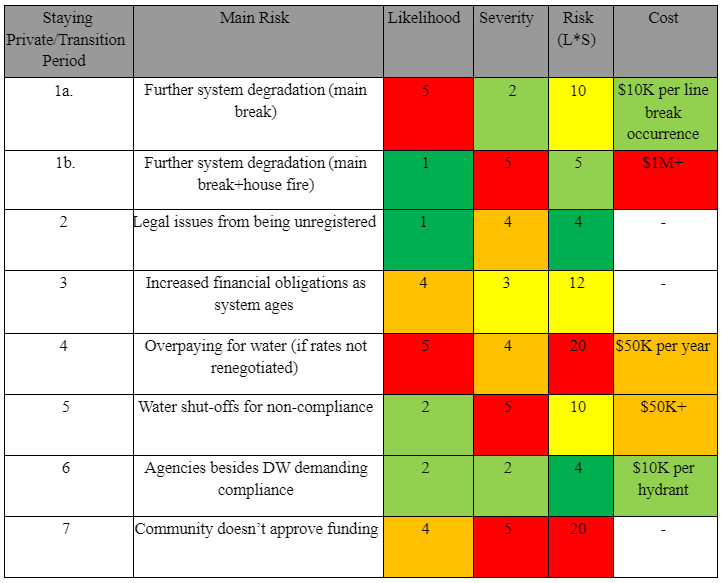
As-Built Digitization
A main deliverable for this project was the digitization of the original as-built documents. This will create an interactive model that the Columbine Lakes Homeowner Association can use to help locate water lines, valves, and other infrastructure. It is important to note that this digitization is not an exact science. The drawing scale and locations of lines are all approximate.
It is also important to understand that this is a two-dimensional model. The pipe elevations, inverts, and slopes are not included. A survey of the neighborhood would likely need to be performed to get exact locations and elevations to be used in any design capacity.
The model shows property lines, main lines, hydrants, fittings, valves, and blowoff valves. Each of these can be found using the drawing labels and legend. An original as-built was left as a background to provide context and easier identification of features.
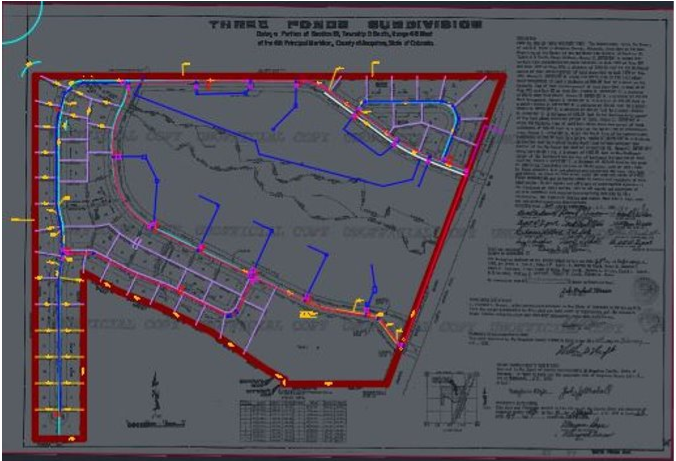
EpANET Hydraulic Model
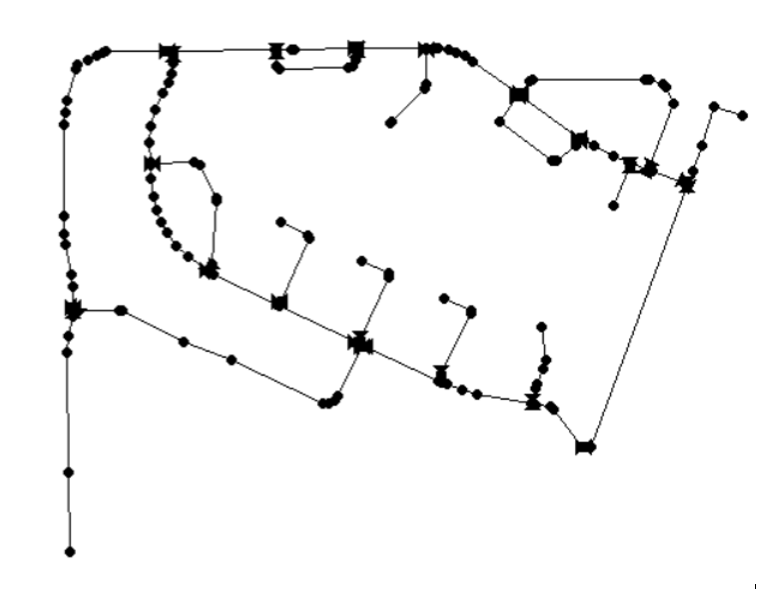
The hydraulic model was created using EPANET, a public domain, water distribution system modeling software developed by the United States Environmental Protection Agency’s Water Supply and Water Resources Division. Developed as a tool for understanding the movement of drinking water within distribution systems, we have produced a distribution network that mimics that of Columbine Lakes and have compiled pipe information, valve locations, and elevations to run simulations. The pipe network was created by converting AutoCAD files to an EPANET file, and parameters such as length, diameter and roughness coefficients were assigned to each segment of pipe. The software, EpaCAD, used to convert files caused issues in the development of the pipe network, and therefore set the model back as there were several disconnected nodes throughout the system.
The valve locations were determined using out-of-date maps and the properties were supplied to us through the client. The elevation of each node was found by using contour maps and Google Earth to locate the approximate surface elevations, then subtracting five feet, since five feet is a standard depth when installing water distribution piping. Although the information and data implemented into the model may not be 100% correct, it is the best approximation we have considering the resources provided and the complexity of EPANET, as it is a free to use software.
The model has yet to run a successful simulation, consequently there are no results to present. The team will continue to work on the model and plan to finish by the end of the semester. A separate, hydraulic analysis report will be provided when the model is complete and accurate.
Next Steps
Looking into the future, our team recommends that the HOA push towards getting on the eligibility list for funding as they have just recently completed the first step in the 10-year plan by registering with the state. The loan application process is crucial to getting started on the construction and should be the top priority of the HOA moving forward. As the HOA moves through each step laid out in the 10-year plan, it will also be important to keep consistent communication with Denver Water. By letting them know what is going on, it will show the HOA’s commitment to the system upgrades and will make it so that there are no surprises for the HOA or Denver Water in terms of what is being done to the system. The team also recommends that the AutoCAD files are updated as system upgrades happen. This way the as-built drawings will always be up to date with system specifications. We will continue to work on the hydraulic model until it is complete and it will be sent to the HOA and Denver Water for review. It is also suggested that this model be updated along with system modifications so that it can be used to observe how the system operates under maximum and minimum flow conditions.
Meet the Team
Kassandra Gongora
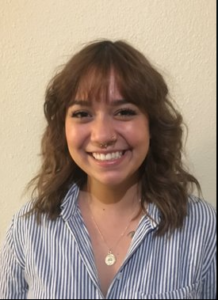 My name is Kassandra Gongora, and I will be graduating in May 2021 with a B.S. in Environmental Engineering as a first-generation student. After graduation, I will be joining Golder Associates as a Graduate Environmental Engineer in their Victoria, Texas office. During my time at Mines, I have been an undergraduate research assistant for Reinventing the Nation’s Urban Water Infrastructure (ReNUWIt) for 2 years, working on projects concerning direct potable reuse water treatment, PFAS removal, and urban stormwater management. I have also been a Resident Advisor for about 3 years. The past academic year has been interesting, to say the least, with the ongoing COVID-19 pandemic, but I couldn’t have asked for a better team for a virtual Senior Design, and this project gave a real taste of what environmental consulting looks like.
My name is Kassandra Gongora, and I will be graduating in May 2021 with a B.S. in Environmental Engineering as a first-generation student. After graduation, I will be joining Golder Associates as a Graduate Environmental Engineer in their Victoria, Texas office. During my time at Mines, I have been an undergraduate research assistant for Reinventing the Nation’s Urban Water Infrastructure (ReNUWIt) for 2 years, working on projects concerning direct potable reuse water treatment, PFAS removal, and urban stormwater management. I have also been a Resident Advisor for about 3 years. The past academic year has been interesting, to say the least, with the ongoing COVID-19 pandemic, but I couldn’t have asked for a better team for a virtual Senior Design, and this project gave a real taste of what environmental consulting looks like.
Andrew Hellman
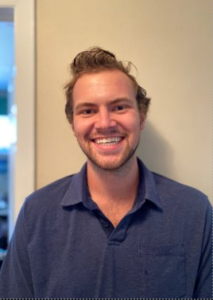 My name is Steven Hellman, though I go by my middle name, Andrew. I am graduating with a B.S. in Civil Engineering in May 2021. I have spent the past 18 months working with Ulteig Engineers, Inc., and plan to join the Ulteig team full time this summer. I will be starting as a Graduate Engineer on a bridge design team. During my time at Mines, I have been very involved with the Mines Activities Council and have spent this past year as President of the organization. The organization is responsible for planning most events on campus, with E-Days and Homecoming being the most notable. I am grateful to have spent this year working on the Columbine Lake team because of the large impact on the community and the real-world experience it provided. Though the project is not like what I will be doing in the future, I have learned countless lessons that will help me become a better engineer.
My name is Steven Hellman, though I go by my middle name, Andrew. I am graduating with a B.S. in Civil Engineering in May 2021. I have spent the past 18 months working with Ulteig Engineers, Inc., and plan to join the Ulteig team full time this summer. I will be starting as a Graduate Engineer on a bridge design team. During my time at Mines, I have been very involved with the Mines Activities Council and have spent this past year as President of the organization. The organization is responsible for planning most events on campus, with E-Days and Homecoming being the most notable. I am grateful to have spent this year working on the Columbine Lake team because of the large impact on the community and the real-world experience it provided. Though the project is not like what I will be doing in the future, I have learned countless lessons that will help me become a better engineer.
James Mcgavin
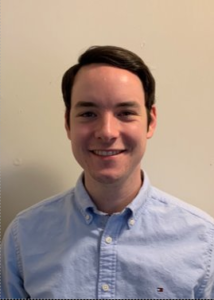 My name is James McGavin and I will be graduating in May 2021 with a B.S. in Civil Engineering. Last summer I interned with Kiewit as a Drainage Engineer Intern and I plan on joining the company full-time following graduation as a Drainage Engineer, working in their Englewood, Colorado office. During my time at Mines I played on the Men’s lacrosse team for four years and served as a captain for two of those years. I was also a member of the Beta Theta Pi fraternity and served as the Secretary of Brotherhood where I planned events for the fraternity such as reserving seats at professional sporting events and setting up various competitions. I thoroughly enjoyed working on the Columbine Lakes team this year because I learned so much about how to utilize my engineering skills to solve real world problems. Not only this, but it was also a rewarding experience to be able to make a positive impact in the community while working with a great group of people.
My name is James McGavin and I will be graduating in May 2021 with a B.S. in Civil Engineering. Last summer I interned with Kiewit as a Drainage Engineer Intern and I plan on joining the company full-time following graduation as a Drainage Engineer, working in their Englewood, Colorado office. During my time at Mines I played on the Men’s lacrosse team for four years and served as a captain for two of those years. I was also a member of the Beta Theta Pi fraternity and served as the Secretary of Brotherhood where I planned events for the fraternity such as reserving seats at professional sporting events and setting up various competitions. I thoroughly enjoyed working on the Columbine Lakes team this year because I learned so much about how to utilize my engineering skills to solve real world problems. Not only this, but it was also a rewarding experience to be able to make a positive impact in the community while working with a great group of people.
Nicole Naper
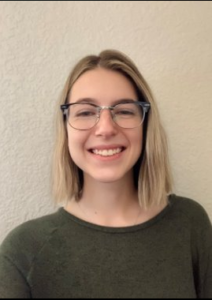 My name is Nicole Naper, and I am graduating in May 2021 with a B.S. in Environmental Engineering. After graduation I am planning on continuing my education here at Mines and I will be pursuing an M.S. in Hydrology with a focus on water policy and management and in the future, I hope to work in water resources engineering. I really enjoyed working on this project because it gave me experience working on a real water system and I felt like I was able to make a difference to the impacted community, which was why I decided to pursue engineering in the first place.
My name is Nicole Naper, and I am graduating in May 2021 with a B.S. in Environmental Engineering. After graduation I am planning on continuing my education here at Mines and I will be pursuing an M.S. in Hydrology with a focus on water policy and management and in the future, I hope to work in water resources engineering. I really enjoyed working on this project because it gave me experience working on a real water system and I felt like I was able to make a difference to the impacted community, which was why I decided to pursue engineering in the first place.
Jaxon Sharp
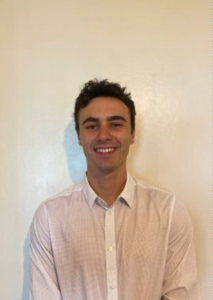 My name is Jaxon Sharp, and I will be graduating in December 2021 with a B.S. in Civil Engineering with an Area of Special Interest in Environmental Engineering. This summer I have a hydrology and hydraulics internship with CivilTech Engineering, a small civil firm in Houston, Texas. If all goes as planned, I will be joining the team full-time at the start of 2022. I was fortunate to be put on the Columbine Lakes water assessment project, as it relates to what I want to do in my professional career. Despite the challenges faced this academic year, our team has worked well together to provide the Columbine Lakes community with a promising future for their water distribution system.
My name is Jaxon Sharp, and I will be graduating in December 2021 with a B.S. in Civil Engineering with an Area of Special Interest in Environmental Engineering. This summer I have a hydrology and hydraulics internship with CivilTech Engineering, a small civil firm in Houston, Texas. If all goes as planned, I will be joining the team full-time at the start of 2022. I was fortunate to be put on the Columbine Lakes water assessment project, as it relates to what I want to do in my professional career. Despite the challenges faced this academic year, our team has worked well together to provide the Columbine Lakes community with a promising future for their water distribution system.


